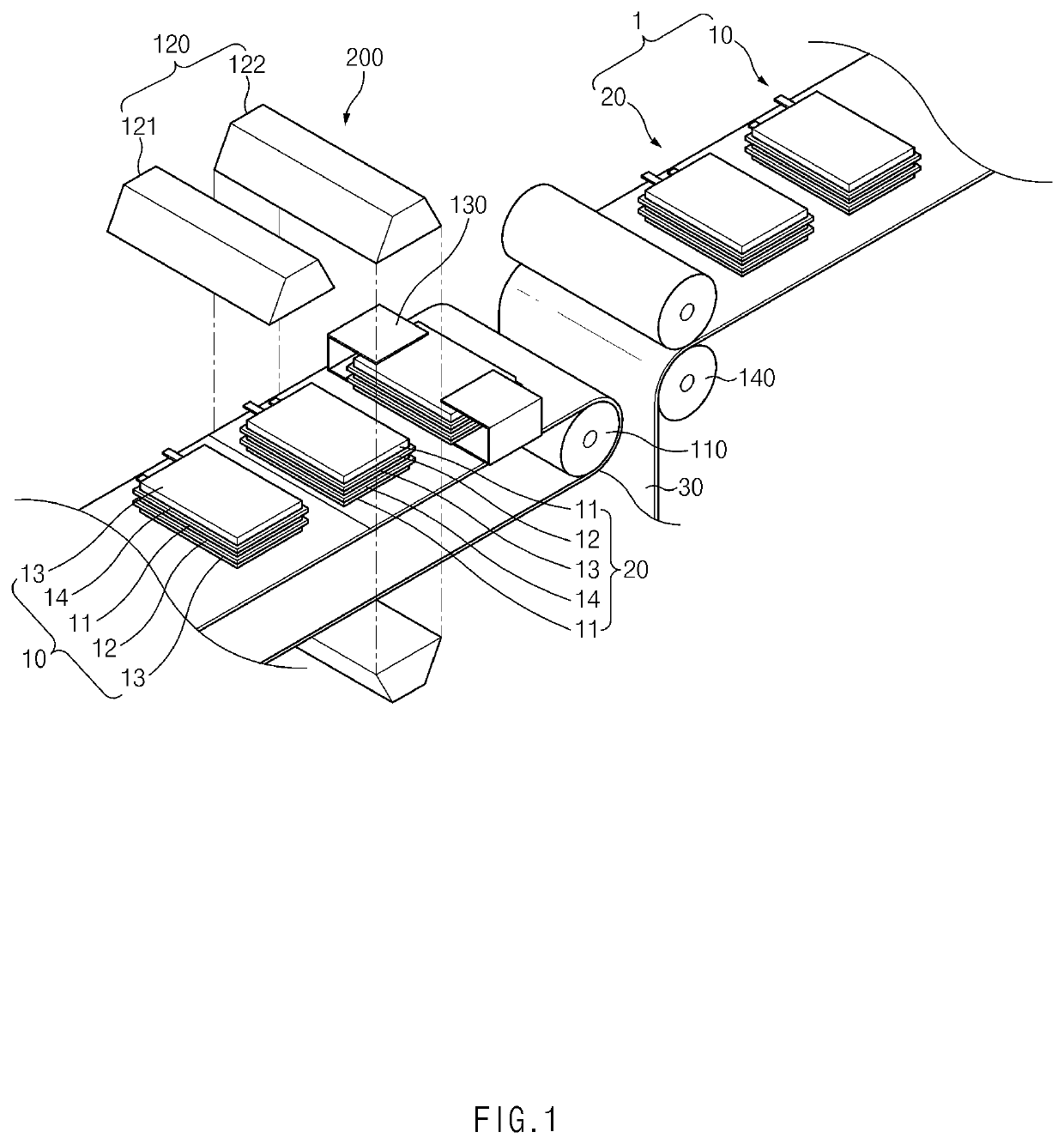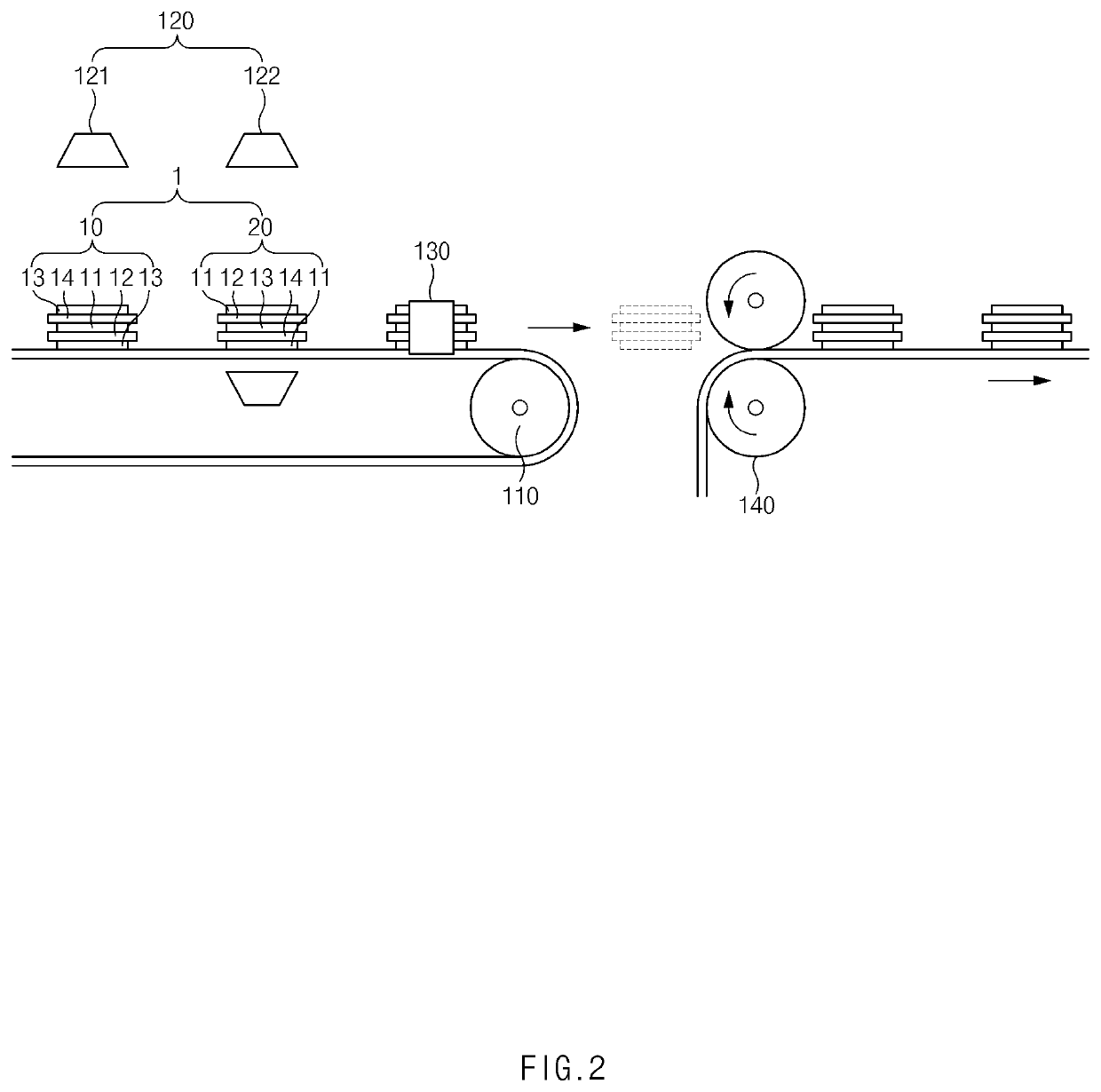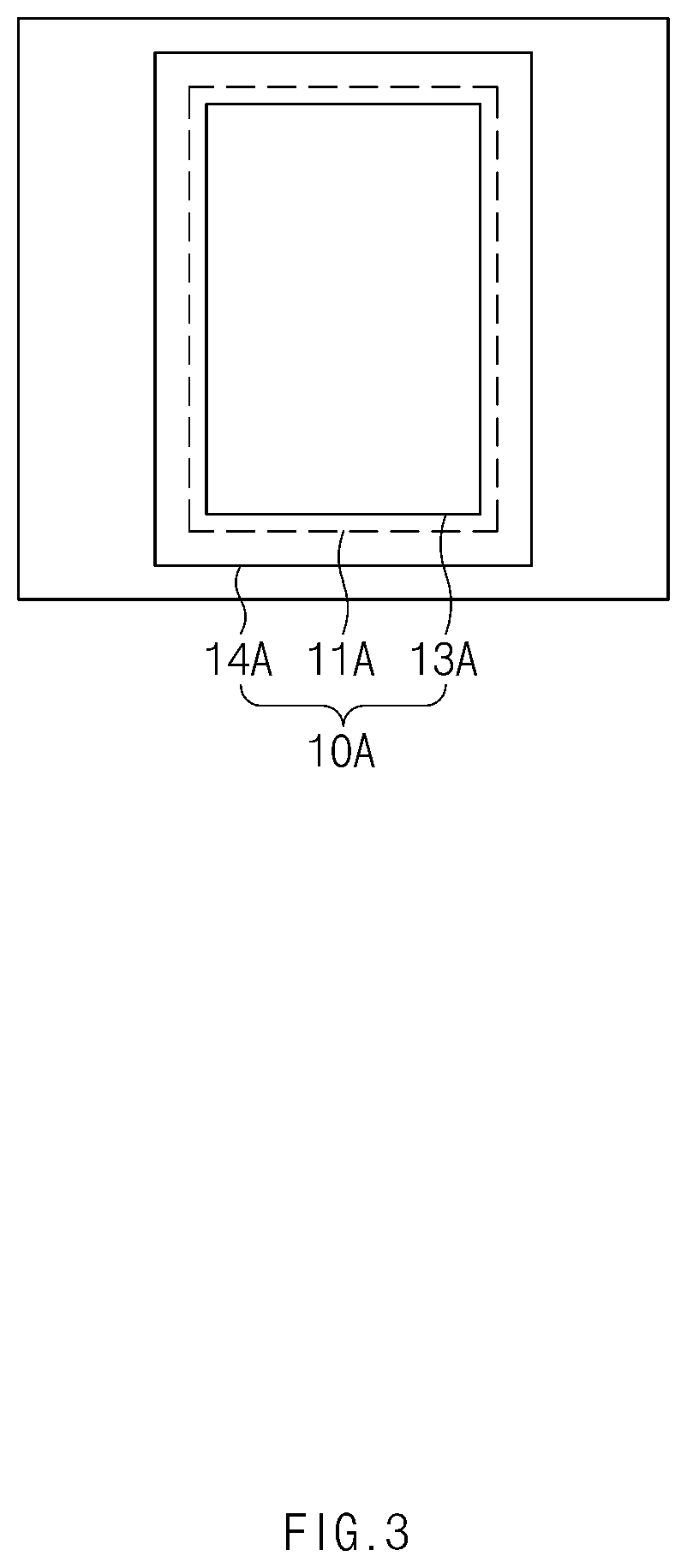Apparatus and method for manufacturing secondary battery
a secondary battery and apparatus technology, applied in the manufacture of final products, instruments, electrochemical generators, etc., can solve the problems of inability to accurately adjust the interval between the unit cells, etc., to prevent the defective electrode assembly, and improve the stacking quality of the unit cells
- Summary
- Abstract
- Description
- Claims
- Application Information
AI Technical Summary
Benefits of technology
Problems solved by technology
Method used
Image
Examples
Embodiment Construction
[0039]Hereinafter, embodiments of the present invention will be described in detail with reference to the accompanying drawings in such a manner that the technical idea of the present invention may easily be carried out by a person with ordinary skill in the art to which the invention pertains. The present invention may, however, be embodied in different forms and should not be construed as limited to the embodiments set forth herein. In the drawings, anything unnecessary for describing the present invention will be omitted for clarity, and also like reference numerals in the drawings denote like elements.
[0040][Method for Manufacturing Secondary Battery According to Embodiment of the Present Invention]
[0041]As illustrated in FIGS. 1, 2, and 5, an apparatus 100 for manufacturing a secondary battery according to an embodiment of the present invention comprises a transfer part 110 continuously transferring unit cells 1, a first measurement part 120 measuring a position of each of the ...
PUM
| Property | Measurement | Unit |
|---|---|---|
| polarity | aaaaa | aaaaa |
| unit cells | aaaaa | aaaaa |
| unit cell | aaaaa | aaaaa |
Abstract
Description
Claims
Application Information
 Login to View More
Login to View More - R&D
- Intellectual Property
- Life Sciences
- Materials
- Tech Scout
- Unparalleled Data Quality
- Higher Quality Content
- 60% Fewer Hallucinations
Browse by: Latest US Patents, China's latest patents, Technical Efficacy Thesaurus, Application Domain, Technology Topic, Popular Technical Reports.
© 2025 PatSnap. All rights reserved.Legal|Privacy policy|Modern Slavery Act Transparency Statement|Sitemap|About US| Contact US: help@patsnap.com



